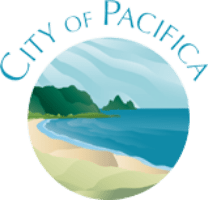
Pacifica
The City of Pacifica is located along a six-mile length of coastal beaches and hills south of San Francisco. The city is comprised of several small valleys spread between Sweeney Ridge in the east, Montara Mountain to the south, and the Pacific Ocean’s rocky bluffs to the west.
Pacifica’s local economy consists mostly of small and medium size businesses. Highway 1 is the major roadway that connects City neighborhoods and allows for traffic flow in and out of the city. At the northern city limits, Pacifica is connected to the City of San Francisco by Interstate 280. Pacifica has a cool summer Mediterranean climate typical of coastal areas of California with dry summers and wet winters, although summer fog regularly produces light drizzle overnight into the early morning hours. The southeastern areas of the city are known to be much sunnier than the rest of the city.
Nearly half of the City’s and its environs are preserved as open space or parkland. This undeveloped land is mainly on the rugged ridges that form the City’s eastern and southern edge and descends to the ocean between Pacifica’s valley communities. Coastal scrub is the predominant vegetation type, interspersed with annual grassland. Significant areas of eucalyptus forest and mixed woodland are present in eastern Sharp Park and on Cattle Hill and San Pedro Mountain. Pacifica also has over six miles of coastline and beaches, offering numerous recreation opportunities.
The City of Pacifica is already experiencing the effects of climate change, including extreme heat and wind events during the summer and fall and flooding in the winter months. Other concerns are extended periods of drought, sea level rise, and coastal erosion.
The City of Pacifica is conducting a climate change vulnerability assessment as part of the PREP project to gain technical data and information for future planning work. The City of Pacifica is not updating its Safety Element at this time, and therefore is not participating in the public engagement process of the PREP study. For more information on the climate change vulnerability assessment process, see the FAQ.
Local Safety and Resilience Highlights
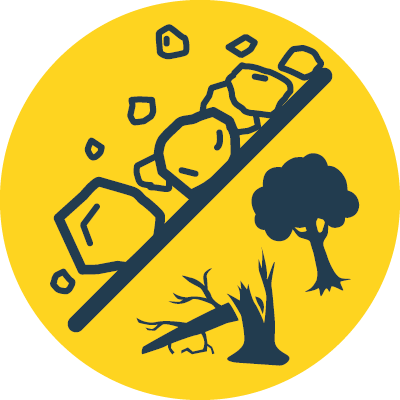
Seismic and Geologic Hazards
The San Andreas Fault, which traverses the northeast corner of Pacifica, is active and capable of causing a large earthquake. Areas located within the valleys of Pacifica have a high potential for liquefaction, or a loss in soil strength that occurs in response to earthquake-induced ground shaking, leading to the collapse of building foundations.
Pacifica also includes slopes that are susceptible to landslides, especially slopes greater than 50 percent. Some areas of Highway 1 are susceptible to landslides due to steep grades and there have been minor rockslides in some areas. If areas of Highway 1 were blocked due to a landslide or other hazard, the city may be severely limited in access to equipment, parts, and materials to repair damaged infrastructure.
Several areas within Pacifica contain soils that are vulnerable to erosion, which is the wearing away of soil and rock by processes such as weathering and the action of waves, wind, and underground water. The parts of Pacifica where soils are most susceptible to erosion caused by wind or rainfall include the northern slope of Mori Point, upper Sharp Park, Shamrock Ranch, and along San Pedro Creek in San Pedro Valley County Park.
Fiber and cellular service is not reliable on the coast, which means that Pacifica residents may have trouble contacting support and response services during an emergency.
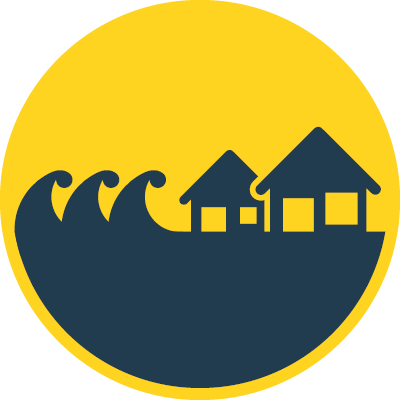
Coastal Hazards
Pacifica already experiences coastal hazards such as coastal flooding and bluff erosion, both of which are exacerbated by sea level rise. Sea level rise is particularly relevant to Pacifica because of buildings and infrastructure located near the coastline. Areas of the Sharp Park Golf Course, the Rockaway Beach district, and the West Linda Mar and West Sharp Park neighborhoods could be susceptible to coastal flooding due to sea level rise. The only section of coastline protected by levees in Pacifica is the Sharp Park Golf Course area. A seawall/revetment structure protects the area north of the Sharp Park Golf Course, generally along Beach Boulevard, including the Pacifica Pier. This structure has required maintenance to repair areas where beach erosion has undermined it.
A tsunami can occur after an earthquake or significant landslide falling into the ocean. They can cause coastal flooding, potentially severe property damage, and the risk of injury or death. Earthquakes off the shore of the Pacific Northwest are likely the most hazardous to Pacifica because of the potential for very large wave generation, and a relatively short travel time (on the order of one to three hours). However, smaller events along local faults could result in a wave that reaches Pacifica with essentially no warning time. There are tsunami evacuation zones in the West Sharp Park neighborhood and Sharp Park Golf Course/Laguna Salada area, Lower Calera Creek and portions of Rockaway Beach, and the residential and commercial area at Linda Mar near the mouth of San Pedro Creek.
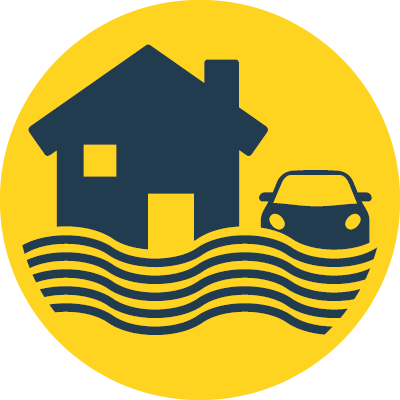
Inland Flooding
Flooding has been an ongoing issue for low-lying areas of Pacifica, and likely will continue to be a challenge in the future. There is a risk of flood inundation in several parts of Sharp Park Golf Course, the Rockaway Beach district, and in the Linda Mar neighborhood along San Pedro Creek.
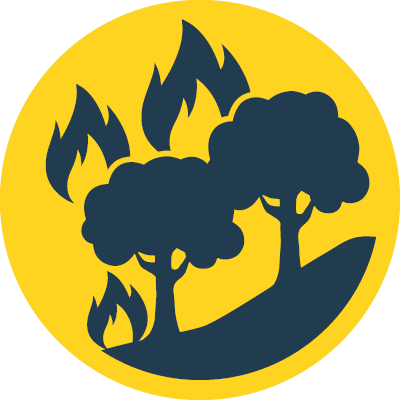
Wildfire
Areas along the southwestern Pacifica City boundary are designated as Very High Fire Hazard Severity Zones. Most of this land is an urban reserve, park, or other designations where extremely low densities of residential development may be permitted.